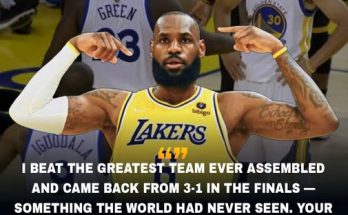In a groundbreaking decision that has sent shockwaves through the college football world, Earl Campbell—the iconic Texas Longhorns running back—has officially been named the Greatest College Football Player of All Time. The announcement came after months of analysis, polling from experts, and spirited fan debates, with Campbell edging out legends like Barry Sanders, Herschel Walker, Tim Tebow, and Reggie Bush.
This moment isn’t just a personal accolade for Campbell—it’s a coronation that reflects his profound influence on the game, his unmatched physical dominance, and his enduring legacy at the University of Texas. For Longhorns fans, it’s a long-awaited vindication. For college football, it’s the final word in the GOAT conversation.
The Tyler Rose: From Humble Beginnings to Historic Heights
Earl Christian Campbell was born in Tyler, Texas, and quickly became known as the “Tyler Rose,” a nickname that would one day be uttered with reverence by college football fans nationwide. He starred at John Tyler High School before committing to the University of Texas in 1974.
From the moment Campbell put on the burnt orange jersey, he was a force of nature. At 5-foot-11 and 230 pounds, he was a physical anomaly—combining brute strength with deceptive speed and balance. Defenders feared him, teammates followed him, and fans adored him.
His college career would span four seasons (1974–1977), culminating in one of the most dominant Heisman Trophy-winning seasons in NCAA history.
The 1977 Heisman Season: A Performance for the Ages
Campbell’s senior season in 1977 was one of legend. Rushing for 1,744 yards and 19 touchdowns in just 11 games, he led the nation in rushing and powered Texas to a 10-1 regular season record. His punishing running style shredded defensive fronts week after week, earning him the Heisman Trophy in a landslide.
But the stats only tell part of the story. Campbell’s presence dictated how teams defended the Longhorns. Defensive coordinators were forced to commit eight, sometimes nine players to the box, yet it rarely made a difference. Earl ran through, around, and over defenders with a violent grace that has never been replicated.
The 1977 campaign remains one of the most dominant seasons by any college player in history. What made it more impressive was how Campbell did it in the brutal Southwest Conference, where physical, grind-it-out football was the norm.
Surpassing the Legends: Why Earl is the GOAT
Campbell’s elevation to GOAT status wasn’t made lightly. The competition was fierce. The final rankings considered players like:
- Barry Sanders (Oklahoma State): The 1988 Heisman winner had a record-setting season with over 2,600 rushing yards, but only one year as a full-time starter.
- Herschel Walker (Georgia): A three-time All-American and national champion, Walker was a relentless runner but didn’t exhibit the same all-around dominance Campbell did in every aspect.
- Tim Tebow (Florida): The face of modern college football and a two-time national champion, Tebow was more iconic than physically dominant.
- Reggie Bush (USC): Electrifying and multi-dimensional, Bush’s highlights thrilled fans, but he lacked the brute inevitability of Campbell’s style.
In contrast, Campbell represented the total package: longevity, dominance, leadership, and historical impact. He carried the Longhorns program on his back and became the prototype for a power running back for decades to follow.
The Cultural Impact: Campbell as a Symbol of Texas Toughness
To understand why Earl Campbell’s GOAT coronation resonates so deeply, especially in Texas, one must appreciate his symbolic role. He embodied everything the Lone Star State holds dear—grit, perseverance, humility, and physical toughness.
He wasn’t just a football player. He was a cultural icon. During a time of social and athletic transformation in the 1970s, Campbell broke barriers with his play and presence. He was the first Longhorn to win the Heisman Trophy and brought national attention to the Texas program that had previously lagged behind other powerhouses in terms of star power.
Campbell’s success helped pave the way for Texas to remain a football blue blood. His legacy is etched into every brick at Darrell K Royal–Texas Memorial Stadium.
Legacy at Texas: The Benchmark for Greatness
Campbell’s jersey number 20 is retired at Texas, and he remains one of only a handful of players to be immortalized with a statue outside the stadium. Ask any Longhorns fan, and they’ll tell you—Earl Campbell is Texas Football.
He still holds multiple Texas records and is a regular fixture at program events. Young players still study his tape, trying to replicate his unique blend of power and vision.
When Steve Sarkisian or any Texas head coach pitches to a blue-chip recruit, it’s no accident that Earl Campbell’s name comes up. He is the program’s eternal north star.
Beyond the Gridiron: A Humble Giant and Ambassador
Campbell’s GOAT recognition also reflects the person he is off the field. Humble, charitable, and fiercely loyal to his roots, Campbell has used his platform for good. He established the Earl Campbell Tyler Rose Award, given annually to the top offensive player in Division I football who was born in Texas, played in Texas, or has other deep ties to the state.
Despite debilitating injuries suffered during his NFL career—many from the same punishing style that made him a legend—Campbell has never expressed regret. Instead, he’s become a vocal advocate for player safety and mental health.
His resilience and faith have inspired countless fans and athletes alike.
The Final Verdict: Why Earl Campbell Deserves the Title
In naming Earl Campbell as the greatest college football player of all time, voters weighed dominance, longevity, leadership, and legacy. Campbell doesn’t just check the boxes—he redefines them.
No one ever questioned if he would be in the GOAT discussion. The only question was when he’d finally receive the crown. That moment has now arrived.
This honor doesn’t just belong to Campbell—it belongs to Texas. It belongs to the Southwest Conference. It belongs to every player who ever feared tackling him and every fan who leapt out of their seat watching him.
Reaction from the College Football World
The announcement lit up social media and talk shows across the country.
- Mack Brown, former Texas head coach, said, “Earl Campbell changed the game. He’s the foundation of Texas football. This GOAT title is long overdue.”
- Reggie Bush, former USC star, tweeted, “I idolized Earl Campbell growing up. Pure power and elegance. No arguments here.”
- ESPN’s Kirk Herbstreit noted, “This isn’t just about stats—it’s about how a player redefined a position, a team, a region. Earl did that.”
Even former rivals weighed in.
- Barry Switzer, legendary Oklahoma coach, said with a chuckle, “I had nightmares game-planning for Earl. He’d run through five of my defenders like they were paper dolls.”Earl Campbell is one of those few. His story—rooted in humble beginnings, forged in the fires of competition, and sealed in the annals of greatness—now has a final chapter:



